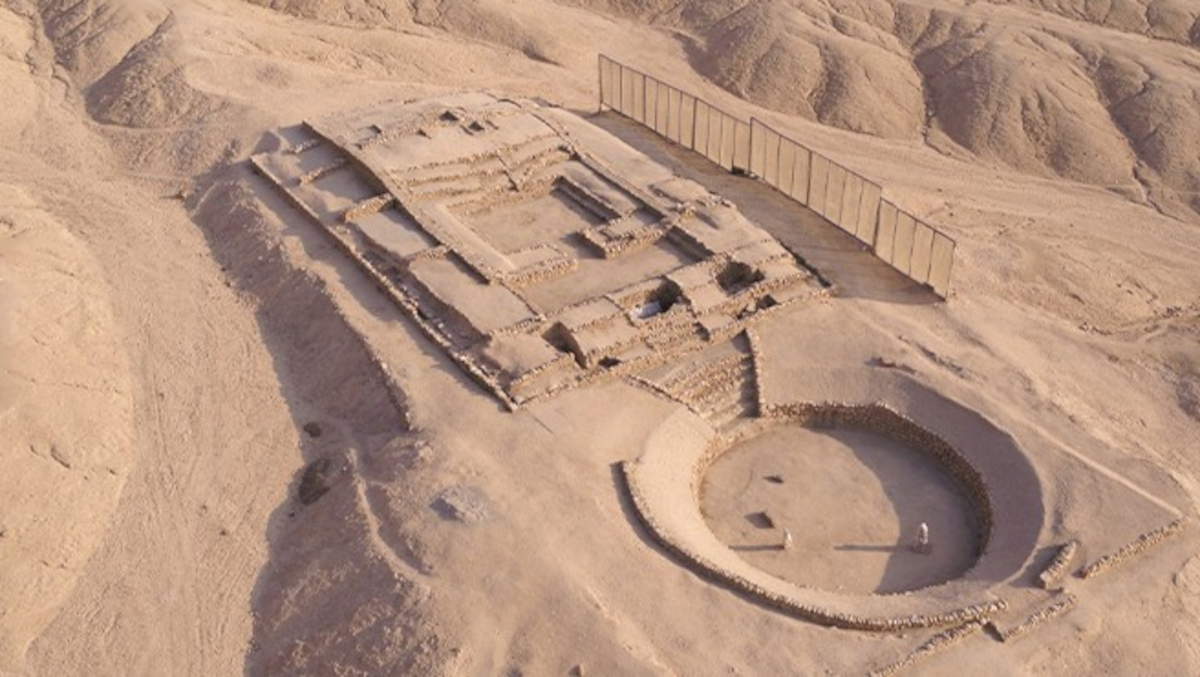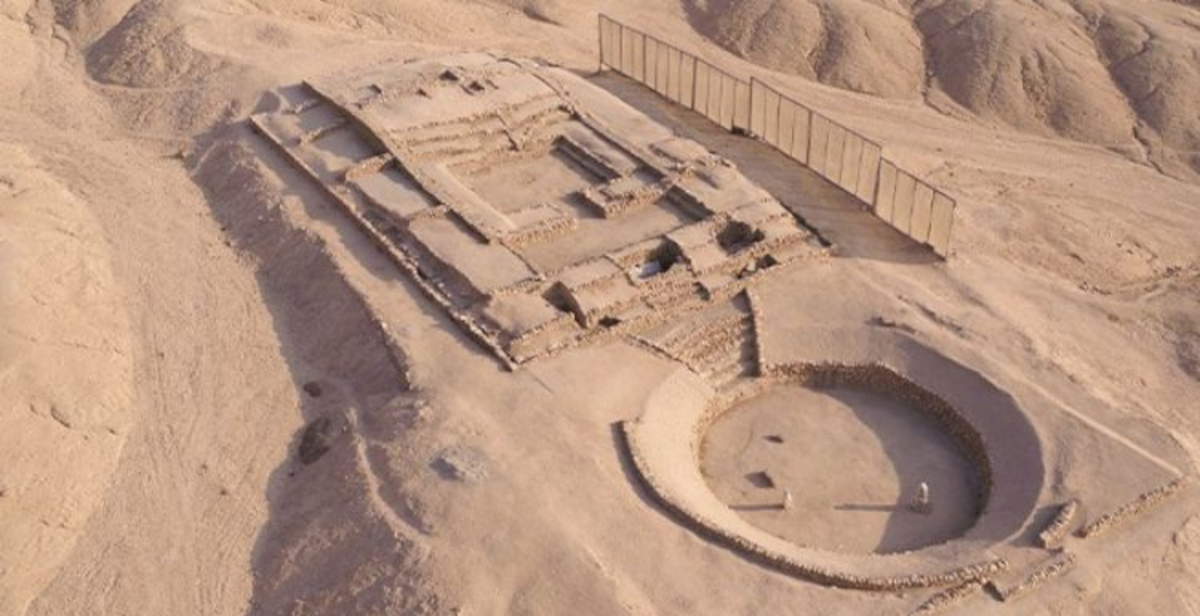The archaeological site of Peñico, in the Supe Valley in Peru, has been officially unveiled to the public as a new stage in the historical exploration of the preInca Andean civilization. This was announced by the director of the Caral Archaeological Zone (ZAC), Ruth Shady, during a press conference held July 3 at Peru’s Ministry of Culture. The urban center, dating back some 3800 years (1800-1500 B.C.), stands as one of the major discoveries related to the network of settlements developed after the decline of the sacred city of Caral.
Located 600 meters above sea level in the province of Huaura (Lima region), Peñico lies on a natural terrace parallel to the Supe River. The choice of the site met very specific strategic criteria: the altitude offered protection from floods and landslides, while the proximity to an ejection cone and the hilly context favored both architectural monumentality and economic and cultural interactions with other regions. According to archaeologists, Peñico functioned as a hub for exchanges that included goods not only from the coast and the Andes, but also from the rainforest.
“This urban center developed following the Caral cultural tradition,” said archaeologist Shady Solís. “Because of its strategic location, it articulated the coastal and mountain villages of Supe and Huaura, as well as those who lived in the Andean-Amazonian territory in the high Andean space of the region. Peñico joins the archaeological sites that can be visited under our management: the Sacred City of Caral, the fishing town of Áspero, and the city of Vichy. The public will also be able to learn about this city of integration.”
Studies conducted by the ZAC hypothesize that as Caral and other primary centers in the valley declined, the people of Peñico maintained active ties to existing networks of social and economic interaction. One of the key elements in understanding the site’s role lies in hematite, an iron ore used for the production of red pigments, believed to have high symbolic value in Andean cosmology. The mining and distribution of hematite may have contributed to the prestige achieved by the local community.

Archaeological investigations have identified 18 structures so far, including public and residential buildings. Of these, particular emphasis has been placed on complex B1-B3, located in sector B of the site. In this major public building is a hall decorated with reliefs depicting pututus, shell-shaped musical instruments used for long-distance communication. The pututu had not only a practical function: it was a symbol of social rank and was also used in religious rituals as an offering to deities.
The architectural complex in Sector B has been interpreted as the center of Peñico’s administrative and ceremonial activities. Its size, commanding position and wealth of artifacts suggest that it was the seat of local authorities and the scene of public gatherings involving individuals of different social hierarchies.
Artifacts of great interest were found inside the structure, including unfired clay sculptures depicting human and animal figures, as well as ceremonial objects. Necklaces composed of beads of various materials also emerged: Spondylus shells, Argopecten purpuratus, Peruvian Felicioliva, minerals such as rhodochrosite and chrysocola, animal bone and clay. Lithic material found includes tools such as moledores, percutores, incus, chancadores and batanes.
To mark the conclusion of this long phase of research and conservation work, the first Peñico Raymi, a festival inspired by Andean tradition, has been announced for Saturday, July 12, 2025. The event will include a symbolic payment ceremony to Pachamama, moments of recognition addressed to the local people for their commitment to heritage protection, and culturally oriented artistic activities.
Peñico will now also be accessible to the public. Like other sites managed by the Caral Archaeological Zone, it has been equipped with minimum essential services to welcome visitors: parking lots, a reception area, and an information and interpretation center. Here the public will be able to learn about the site’s features in detail through educational and interactive materials, three-dimensional models, infographics, dioramas and digital reconstructions.
 |
| Peru, Peñico archaeological site officially unveiled after eight years of excavations and discoveries |
Warning: the translation into English of the original Italian article was created using automatic tools. We undertake to review all articles, but we do not guarantee the total absence of inaccuracies in the translation due to the program. You can find the original by clicking on the ITA button. If you find any mistake,please contact us.